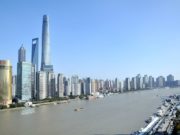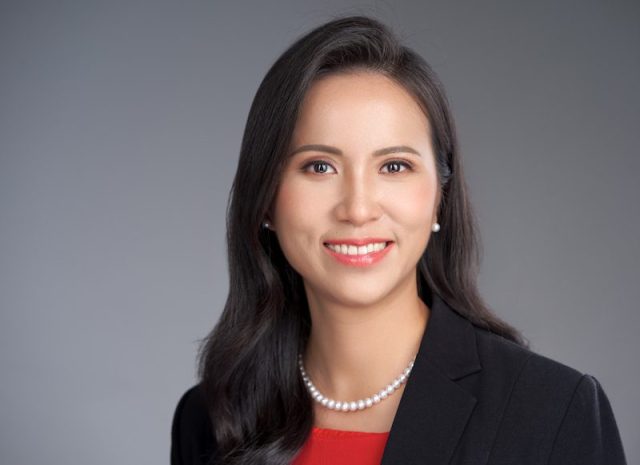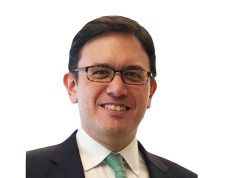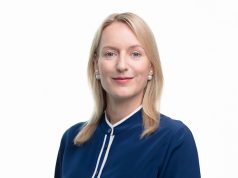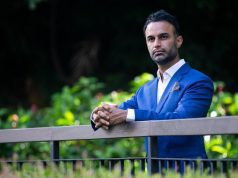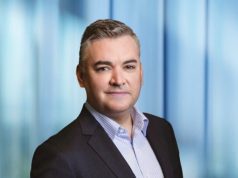Hamilton Lane Kerrine Koh on Private Markets: Increasing Demand from HNW Investors & Family Offices, Changing Landscape, Opportunities & Risks
Private markets is one of the hottest investment topics today – private credit, private equity, venture capital, primary deals, secondaries, real estate and tokenization of private markets investments, and perhaps the most important of all is the private markets ability to generate returns in excess of 10% / 15% / 20% returns & more, for a sustained period of time that is less correlated to public markets. From a minimum $1 million, $10 million or $100 million placement in private markets, investors can now invest with $1,000, $10,000, $100,000 and with daily or monthly market liquidity instead of lock-in of 7 to 10 years. All these really true? What are the opportunities and risks?
Exclusive Interview – We speak to Kerrine Koh, Head of Southeast Asia at Hamilton Lane on private markets, key trends, increasing demand from non-institutional investors including HNW (high net worth) investors & family offices, the changing landscape of private markets and opportunities & risks in private markets investments. Hamilton Lane is one of the largest private markets investment firms globally with $832 billion in assets under management and supervision (as of 31/12/22). Kerrine formerly served as BlackRock’s Head of Alternatives Distribution for Southeast Asia (BlackRock is the world’s largest asset manager, with $8.59 trillion AUM).
” For the Most Conservative Investors, Good Time to Look at Senior Credit – High Single Digit to Low Teens Returns “
Kerrine Koh, Head of Southeast Asia at Hamilton Lane
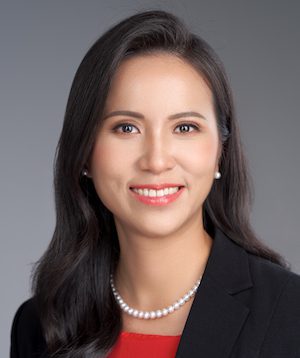
Kerrine Koh is the Head of Southeast Asia at Hamilton Lane (Managing Director). She is primarily responsible for business development, as well as coverage of client relationships in Southeast Asia. Before joining Hamilton Lane, Kerrine was the Head of Alternatives Distribution for Southeast Asia at BlackRock, where she was responsible for distribution strategy and client engagements on BlackRock’s alternative investment product suite, across client segments. Kerrine first joined BlackRock in 2010 as a member of the iShares Global Client Group. Hamilton Lane is one of the largest private markets investment firms globally with $832 billion asset under management and supervision as of 31/12/22, dedicated exclusively to private markets investing for more than 30 years. Visit Website: Hamilton Lane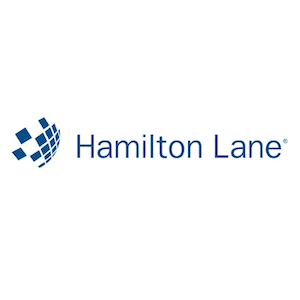
Key Highlights (Below for Interview & Full Summary)
On Private Markets Opportunities & Risks:
- Opportunities in 2023 – Private credit, secondaries and infrastructure will provide compelling opportunities in the year ahead
- Risks & economic factors – Most obvious impacts are higher borrowing costs and higher discount rates, which may put pressure on valuations … … reflected in slower investment activity.
- Public markets vs private markets – Private markets continue to outperform public markets
- For Conservative investors – Good time to look at senior private credit. Private credit is a relatively resilient asset class. And to be in senior secured credit provides an additional layer of protection within the capital structure against defaults. Investors should be looking at high single digit to low teens returns
- Why increased demand from non-institutional investors & HNW investors – Have recognized the performance and opportunity set within private markets, and this is why allocations are continuing to rise
” More than 85% of companies with revenues over $100 million are private “
- Returns decreasing with more investment managers & investors chasing the same opportunities: Public company universe continues to contract. More than 85% of companies with revenues over $100 million are private. Private markets are the only way to play in the large, global universe of growing companies.
- Closed-end Funds – Minimums are around $5 million and capital is traditionally locked up for 8, 10 or even 12 years
- Liquidity – Secondary market has become a very active and viable source of liquidity for investors.
- Evergreen Funds – Lower minimums and can provide the option for regular liquidity. Eg. Hamilton Lane’s Global Private Assets Fund (GPA) with 14.7% annualized returns. Minimum is $125,000 and can be lower if accessed via a tokenized structure.
- Information & education availability – It is true that there is more opacity (less information available) when it comes to private markets data and information as compared to public markets.
- Portfolio allocation strategy – Investors of all types should have a portion of their portfolios allocated to the private markets … … to benefit from the historical outperformance of this asset class. We do not recommend that investors to “time the market”; but rather that they remain consistently invested in a diversified portfolio of private market assets.
- Secondaries & Tokenization – Tokenization and the growth of secondaries market allows investors to manage the liquidity of their private markets investments more efficiently.
- Potential Bubble – Just like other asset classes, investors need to be disciplined and not chase valuations.
- Why Private equity outperforms public markets – Better form of governance than public ownership. Nearly 40% of companies in Russell 2000 index have negative earnings, while only 8% of private companies had negative earnings through Q3 2022.
- Private companies valuations – Private companies were bought at more conservative multiples. Therefore there was more room for public valuations to fall without the same decline in private equity.
- HNW allocation to Private Markets – From an asset allocation perspective, many of them have zero to very low allocation to private assets.
On Hamilton Lane in Asia & Kerrine Koh
- How to invest in Hamilton Lane Private Markets – Depending on the product, structure and region, we have some investors such as family offices coming directly to us while others may find more ease going through our distribution partners and platforms.
- Why join Hamilton Lane after 12 years at BlackRock – A difficult decision but I was excited to be part of the growing team to bring our global scale, access and expertise in private markets to better serve investors in Southeast Asia.
- Advice for investors, avoiding frauds & scams – Keep yourself updated on what is happening in the markets. Given that investment is a long-term endeavour. Stay the course and remain invested and don’t let your decisions be guided purely by short term headlines.
” don’t let your decisions be guided purely by short term headlines “
Interview with Kerrine Koh, Hamilton Lane Head of Southeast Asia
On Private Markets Trends, Opportunities & Risks
1. What are the latest trends in private markets & most popular investments in private markets? Which investments have high returns opportunities in 2023 & beyond?

Kerrine: In my role as Head of Southeast Asia for Hamilton Lane, one major trend we are seeing is the growth of private wealth across the region. Fuelled by strong performance of private assets and relative resilience in performance in recent times, we have seen more demand from HNWI (high net worth) to gain access. As such, we have seen more products being structured to appeal specifically to non-institutional investors.
Within private markets specifically, despite the challenging investment landscape, Hamilton Lane’s 2023 Market Overview report recently found that within the private markets, we’re still seeing that private credit, secondaries and infrastructure will provide compelling opportunities in the year ahead.
- Within private credits, we have seen historical consistency in regards to returns throughout all types of market environments. Based on past market data, prior periods of rising interest rates have translated to better yield for these securities, especially since most are floating rate, and we expects this period to be similar.
- Looking at the current secondary market, we see that supply notably outstrips demand, where prices are coming down and where the dynamic for buyers is likely to continue improving as more supply hits the market. This is also the area of the market where the most innovation and creativity are occurring around exits and liquidity options, according to our research.
- For infrastructure, we continue to see strong growth as global governments continue to rebuild and enhance their infrastructure as a social and competitive issue, particularly in the area of energy transition assets.
” Private Credits – prior periods of rising interest rates have translated to better yield for these securities, especially since most are floating rate “
2) What are the key risks in private markets? How will global economic factors affect private markets?
Geopolitics, supply-chain disruption, rising interest rate & inflation, ongoing risky events including 2023 Banking Crisis – Silicon Valley Bank, Signature Bank, First Republic Bank, Credit Suisse.

Kerrine: The global economic landscape has definitely seen a great deal of disruption over the last year. Inflation, rising interest rates and an overall volatile market environment are leaving their mark on the private markets. The most obvious impacts are higher borrowing costs and higher discount rates, which may put pressure on valuations. This is reflected in slower investment activity (at least relative to record activity in 2021), and consequently in fundraising, where we see a challenging road ahead.
Overall, however, the private markets continue to outperform public markets, and through Q3 of 2022 our data shows that private market strategies outperformed their public market counterparts, in some cases by thousands of basis points. And there are sub-segments, such as private credit, that even benefit from rising interest rates. Previous periods of rising interest rates have meant better yield for these securities, especially since most are floating rate, and we expect this period to be similar.
” rising interest rates and an overall volatile market environment are leaving their mark on the private markets. The most obvious impacts are higher borrowing costs and higher discount rates, which may put pressure on valuations “
3) For the most conservative investors, what will be the most suitable investments in private markets and what is the range of returns they can expect?

Kerrine: With regard to the private markets broadly, corporate fundamentals remain strong and at historically high levels. At the same time, growth, while moderating, is still fairly robust across most private market portfolios.
That said, for the most conservative investors, we believe this is a good time to look at senior private credit. As mentioned, we believe private credit is a relatively resilient asset class. And to be in senior secured credit provides an additional layer of protection within the capital structure against defaults. Investors should be looking at high single digit to low teens returns, in this environment.
” for the most conservative investors, we believe this is a good time to look at senior private credit “
On Private Markets for Non-institutional investors, HNW investors, Family Offices
Hamilton Lane, with $832 billion asset under management and supervision as of 12/31/22, is a lesser known asset manager in Asia to non-institutional investors, HNW investors & family offices. Top private equity firm $952 billion Blackstone recently launched a branding campaign to create more awareness to non-institutional investors & HNW investors.
4) Why are more private markets asset managers targeting non-institutional investors & HNW investors? Is this because there are more investment opportunities? But with more investment managers & investors chasing the same opportunities, will returns decrease in private markets?

Kerrine: A significant part of this is driven by demand from non-institutional investors & HNW investors in the region who have recognized the performance and opportunity set within private markets, and this is why allocations are continuing to rise and we expect will continue to rise well into the future.
In terms of opportunity set, in fact more than 85% of companies with revenues over $100 million are private – and as the public company universe continues to contract, in our view, private markets are the only way to play in the large, global universe of growing companies.
” 85% of companies with revenues over $100 million are private “
5) How liquid are investments in private markets? What is the lock-in period? And what is the minimum placement amount?
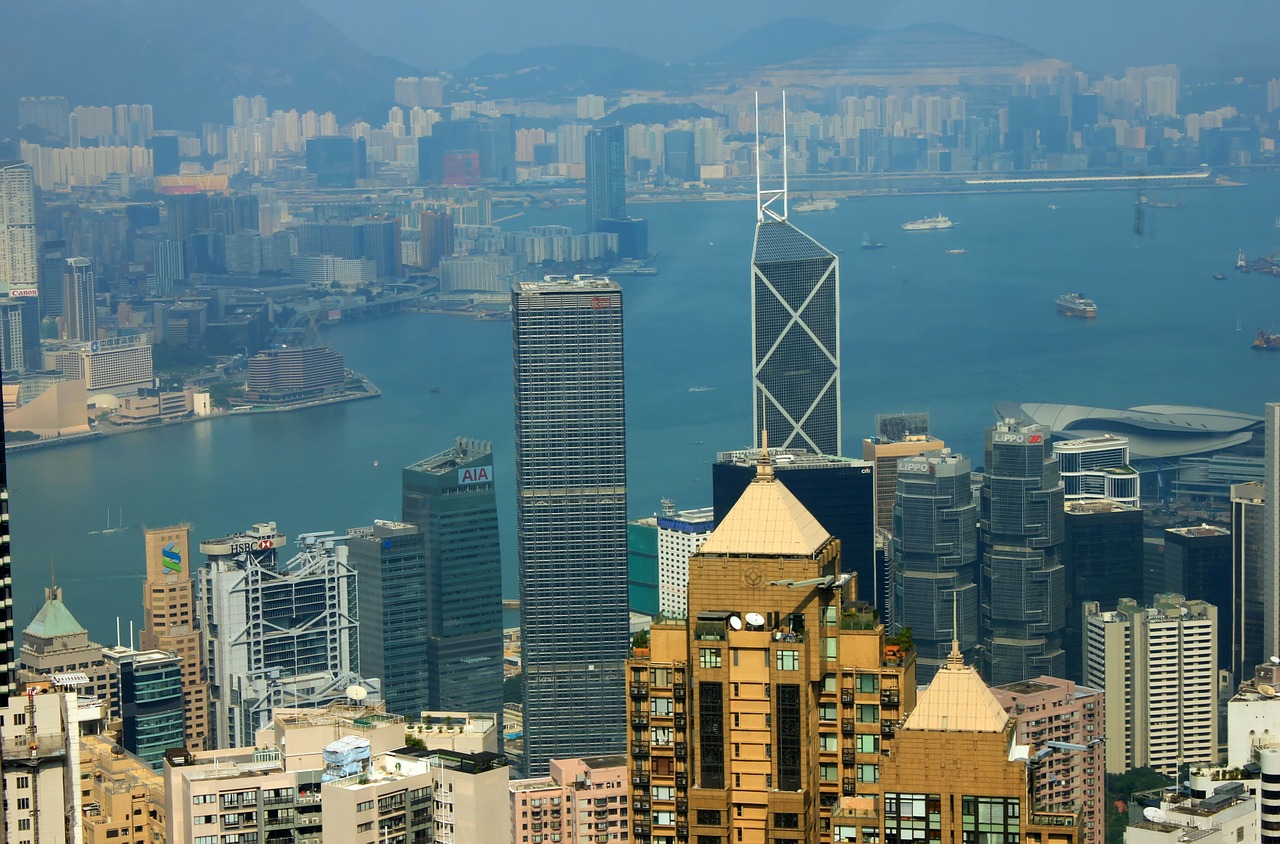
Kerrine: This varies depending on strategy. In a closed-end vehicle, minimums are around $5 million and capital is traditionally locked up for 8, 10 or even 12 years – though the secondary market has become a very active and viable source of liquidity for investors. Other structures, such as evergreen vehicles, have lower minimums and can provide the option for regular liquidity.
” minimums are around $5 million and capital is traditionally locked up for 8, 10 or even 12 years”
Hamilton Lane’s Global Private Assets Fund (GPA), is an evergreen vehicle open to retail and wholesale investors in Asia and other regions globally and enables access to institutional-quality private markets exposure through a single investment. Since inception it has returned 50.88%, or 14.7% on an annualized basis (as of 31/1/23). GPA aims to provide a highly diversified offering, investing in a mix of direct equity, secondaries and direct credit investments across geographies, industries and general partners. The investment minimum is US$125,000 and can be lower if accessed via a tokenized structure.
(Hamilton Lane’s Global Private Assets Fund) 14.7% on an annualized basis. The investment minimum is US$125,000 and can be lower if accessed via a tokenized structure “
6) Private markets information is less accessible to investors (family offices, HNW investors etc). Where can they find more information and how do they know where to invest in?

Kerrine: It is true that there is more opacity (less information available) when it comes to private markets data and information as compared to public markets. We have endeavored to change this.
We are providing educational information on private markets and updates on our views through our website and via our intermediary and platform partners. Our podcast series “Private Markets Made Human” also tries to distill key trends and insights in a way that is accessible to individual investors. This is available on Apple podcast and Spotify.
” It is true that there is more opacity when it comes to private markets data and information as compared to public markets “
On Private Markets Investment Strategies, Portfolio Allocation, Risks, Bubble, Valuation Accuracy
7) For institutional investors & intermediaries (private banks, private wealth management), they typically do portfolio allocation. How about for family offices, UHNW & HNW investors? Should they also have a portfolio allocation strategy when allocating to private markets? Or should / do they allocate because they do not need the funds (Eg. 7 to 10 years)?
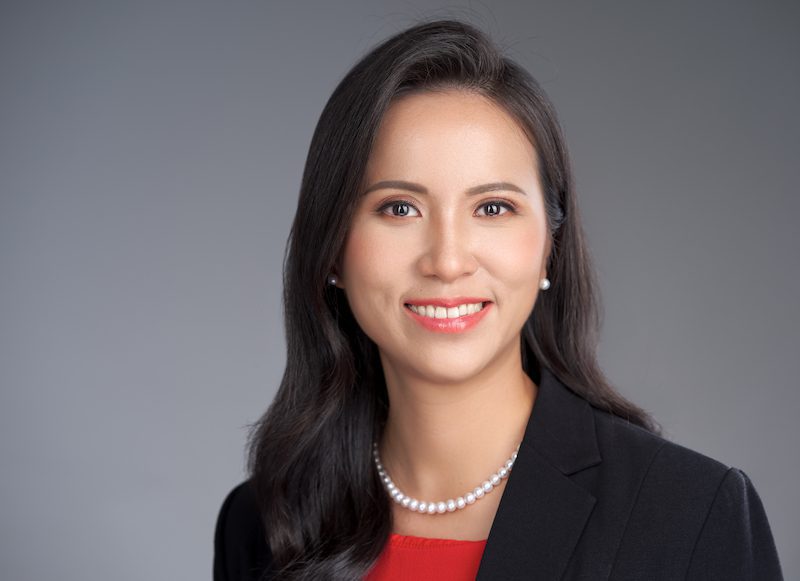
Kerrine: Our view is that investors of all types should have a portion of their portfolios allocated to the private markets, in order to benefit from the historical outperformance of this asset class. We do not recommend that investors to “time the market”; but rather that they remain consistently invested in a diversified portfolio of private market assets.
” We do not recommend that investors to “time the market”; but rather that they remain consistently invested in a diversified portfolio of private market assets “
8) With the rise of secondaries and tokenization, what has really changed for private markets? Will there be a potential bubble in certain private markets investment like Meme stocks (Stocks being popularised on social media, causing share price to increase considerably without fundamentals)?

Kerrine: We are encouraged and invigorated by the many areas of growth, change and opportunity within our asset class. We believe that tokenization and the growth of secondaries market allows investors to manage the liquidity of their private markets investments more efficiently. We believe these trends will help to broaden access to private markets. Just like other asset classes, investors need to be disciplined and not chase valuations.
” tokenization and the growth of secondaries market allows investors to manage the liquidity of their private markets investments more efficiently “
9) Private markets can consistently outperform public markets, how is this possible? And are private markets valuations being “managed” or “inflated”?

Kerrine: With regard to performance – despite the downward pressure applied by rising interest rates and inflation in 2022, Market Overview data shows that as of Q3 2022, overall private markets demonstrated more resilience than public markets, outperforming public strategies across the board – in some cases by thousands of basis points. For example, buyout outperformed the S&P 500 by nearly 2,050 basis points, while infrastructure and real estate beat the FTSE All Equity REITs Index by more than 3,400 basis points.
Turning to valuations, despite the widespread perception, our data demonstrates that in fact, private markets valuations are generally accurate – the notable exceptions being certain growth and venture investments. Market Overview data shows that sector composition matters. While S&P 500 was down in 2022, more than 30% of companies in the index had positive returns. Overall, better-performing sectors have a greater weighting in private portfolios than in public markets.
Secondly, we believe private equity outperforms because it’s a better form of governance than public ownership. Nearly 40% of companies in Russell 2000 index have negative earnings, while only 8% of private companies had negative earnings through Q3 2022.
Lastly, private companies were bought at more conservative multiples. Therefore there was more room for public valuations to fall without the same decline in private equity. These factors suggest that, at the current time, there is not any blanket over or under valuation of private assets, dispelling the narrative that private markets valuations are overstated or “inflated” today.
” private equity outperforms because it’s a better form of governance than public ownership. Nearly 40% of companies in Russell 2000 index have negative earnings, while only 8% of private companies had negative earnings “
On Private Markets & Wealth Growth in Southeast Asia
Many research & economic reports are forecasting China, India and Southeast Asia to have strong economic growth.
10) What are the key trends & investment opportunities in private markets in Southeast Asia?

Kerrine: As noted above, one key trend is the growth of HNWI and family offices in Southeast Asia. Looking at the APAC region, we have over a quarter of the world’s billionaires, and that figure looks as though it will continue to grow.
From an asset allocation perspective, many of them have zero to very low allocation to private assets. From our perspective, there is a great opportunity to serve this expanding investor base, by helping them to establish or expand their exposure to private markets assets, with products such as GPA (Global Private Assets Fund) or a customized mandate.
” many of them have zero to very low allocation to private assets “
11) Why is Southeast Asia benefiting from global supply chain diversification? And will this lead to increased economic & wealth growth in Southeast Asia?
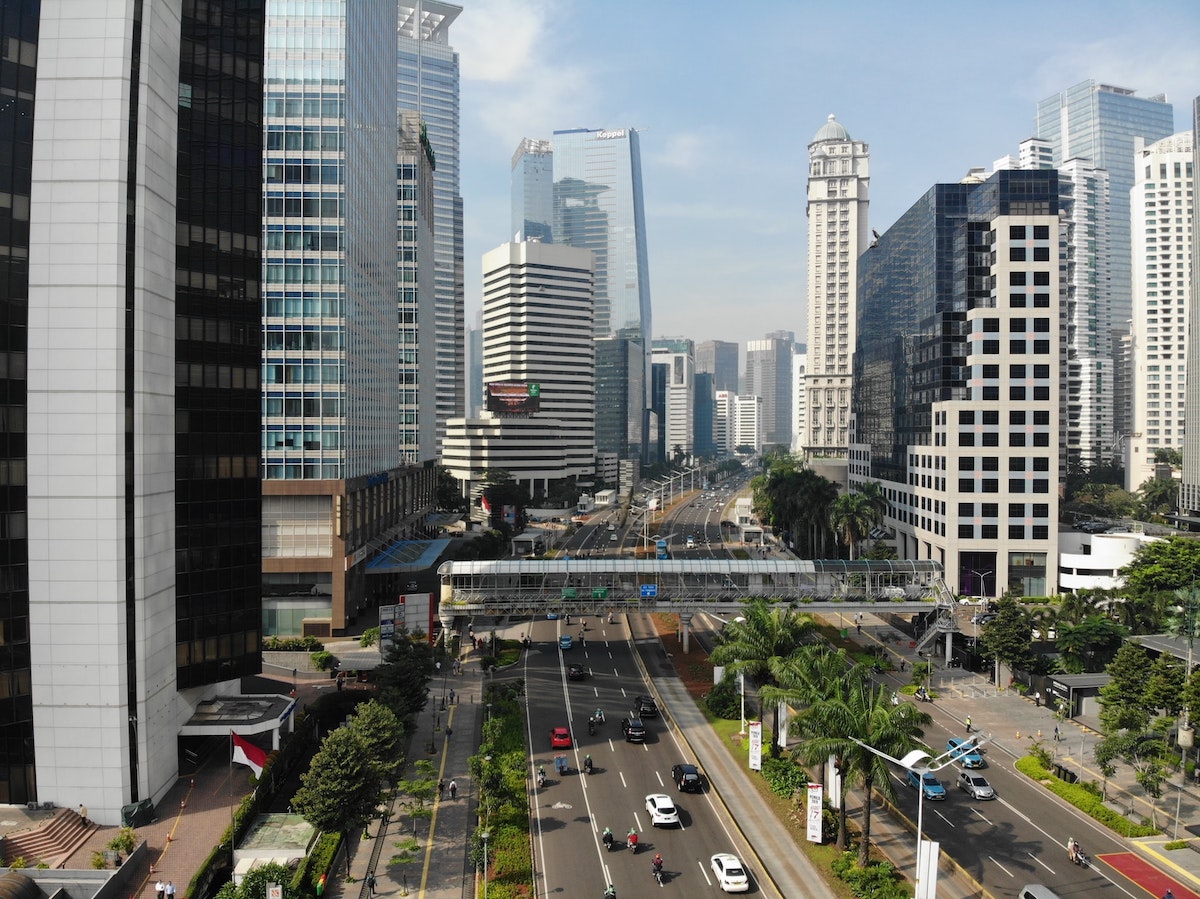
Kerrine: Southeast Asia is benefiting from global supply chain diversification for several reasons.
- First, the ongoing geopolitical developments have led many companies to seek out alternative manufacturing locations to reduce their reliance on traditional markets. As a result, Southeast Asian countries such as Vietnam, Indonesia, and Thailand have emerged as popular alternative destinations for global firms.
- Second, Southeast Asia’s geographical location provides a strategic advantage in terms of shipping and transportation. The region is well connected to major trade routes and has a large number of ports, making it easier and more cost-effective to move goods between countries.
- Third, many Southeast Asian countries have implemented business-friendly policies and incentives to attract foreign investment. Combined with a young and increasingly skilled workforce, this has resulted in the development of world-class manufacturing facilities and supply chain infrastructure.
Overall, Southeast Asia’s strategic location, business-friendly policies, and competitive labor force have made it a prime destination for companies looking to diversify their supply chains and reduce their dependence on any one country or region. This influx of investment and spend in the region will lead to an increase in both economic and wealth generation opportunities in the region.
” influx of investment and spend in the region will lead to an increase in both economic and wealth generation opportunities in the region “
On Hamilton Lane & Kerrine Koh (Hamilton Lane Head of Southeast Asia)
Hamilton Lane is one of the largest private markets investment firms globally with $832 billion asset under management and supervision as of 31/12/22, dedicated exclusively to private markets investing for more than 30 years. But Hamilton Lane is a lesser known asset manager in Asia to non-institutional investors, HNW investors & family offices.
12) What is Hamilton Lane presence in Asia / APAC? Are your clients mainly institutional investors (Pension funds, Sovereign wealth funds etc)?
 Kerrine: The region is critical to us – with 6 out of our 22 global offices based here in Asia. This on-ground presence is essential to both better service investors in the region, but to also identify opportunities and understand regional nuances in the market landscape.
Kerrine: The region is critical to us – with 6 out of our 22 global offices based here in Asia. This on-ground presence is essential to both better service investors in the region, but to also identify opportunities and understand regional nuances in the market landscape.
While our traditional investor base has been institutional investors, who are investing for the benefit of their end-beneficiaries and retirees, Asia-Pacific has now become one of the leading hubs for HNWIs and family offices. Today, more than one third of our evergreen funds are being invested by APAC wealth investors.
With Singapore as a gateway, we’re seeing it as the centre of an ecosystem; deals are being done here, there is vibrancy, and with more investors and wealth being accessible out of Singapore for the region.
We’ve also recently opened an office in Shanghai. While Hamilton Lane, has invested in this region for more than 15 years, the office represents new capabilities in the RMB market, which will better position us to deliver new and differentiated private markets solutions to our clients.
” more than one third of our evergreen funds are being invested by APAC wealth investors “
13) Can non-institutional investors invest in Hamilton Lane private markets investment products? Do investors go direct to you or do they invest with your distribution partners such as private banks or private wealth management firms? Who can they reach out to? And is there a minimum placement or qualifying criteria?
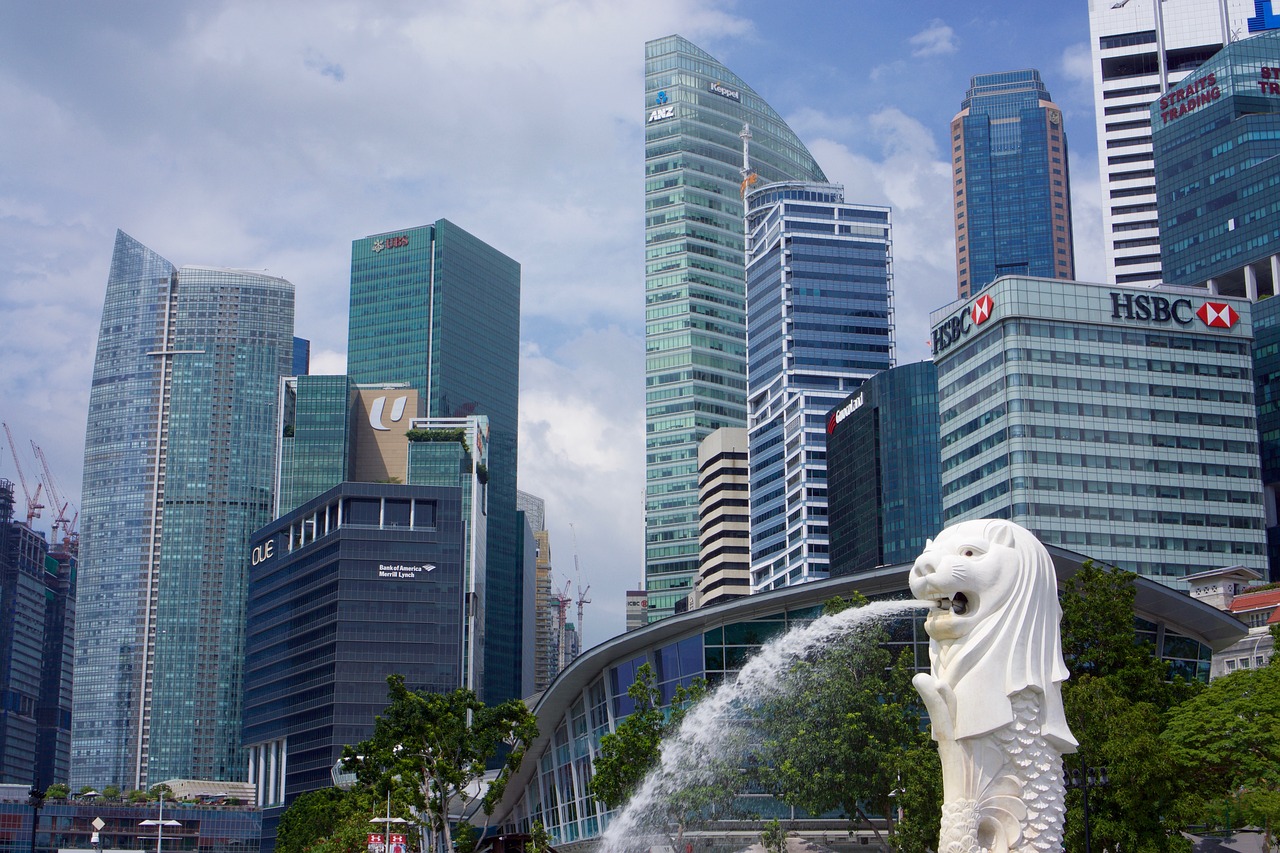
Kerrine: While our closed-end products have certain thresholds in terms of accreditation and minimum investments, we also have a large and growing Evergreen platform, which contains products, including GPA (Global Private Assets Fund), that are open to a broader set of investors.
With regard to how investors come into our products, depending on the product, structure and region, we have some investors such as family offices coming directly to us while others may find more ease going through our distribution partners and platforms, such as ADDX here in Singapore, through which we tokenized a portion of our GPA Fund last year.
From Question 5:
- In a closed-end vehicle, minimums are around $5 million
- Other structures, such as evergreen vehicles, have lower minimums.
- Hamilton Lane’s Global Private Assets Fund (GPA), is an evergreen vehicle open to retail and wholesale investors in Asia and other regions globally and enables access to institutional-quality private markets exposure through a single investment. The investment minimum is US$125,000 and can be lower if accessed via a tokenized structure.
” we have some investors such as family offices coming directly to us while others may find more ease going through our distribution partners and platforms “
You are Hamilton Lane Head of Southeast Asia and joined Hamilton Lane in 2022 from BlackRock after 12 years. (Kerrine is former BlackRock Head of Alternatives Distribution Southeast Asia. BlackRock is the world’s largest asset manager with $8.59 trillion AUM, 31/12/22)
14) Why did you decide to join Hamilton Lane and to lead the Southeast Asia market? And what is your current business focus? To expand outreach & education to non-institutional investors such as family offices & HNW investors?

Kerrine: It was a difficult decision but I was excited to be part of the growing team to bring our global scale, access and expertise in private markets to better serve investors in Southeast Asia.
Southeast Asian investors tend to be earlier in their private markets programs and some investors have not made any private markets allocations historically, and are looking to do so for the first time.
Personally, I also believe that individual investors would be better served by improved access to private markets as a way to improve their retirement planning and future financial well-being and Hamilton Lane has a clear purpose and vision to democratize access to private markets, in order to serve these investors.
” some investors have not made any private markets allocations historically, and are looking to do so for the first time “
Last word: Advice for investors
Frauds & scams are increasing. Governments are making policy changes & U-turns. The recent 2023 Banking Crisis (Silicon Valley Bank, Signature Bank, First Republic Bank, Credit Suisse) has shown us how quickly investments & businesses can change overnight especially with the “benefits” of technology and digitalization.

15) Any simple word of advice for investors, and in private markets?
Kerrine: My advice will be to keep yourself updated on what is happening in the markets.
Given that investment is a long-term endeavour. Stay the course and remain invested – and don’t let your decisions be guided purely by short term headlines.
” Given that investment is a long-term endeavour. Stay the course and remain invested – and don’t let your decisions be guided purely by short term headlines “
Thank you Kerrine for providing key insights into private markets investments. Kerrine Koh is Head of Southeast Asia at Hamilton Lane, one of the largest private markets investment firms globally with $832 billion asset under management and supervision as of 31/12/22, dedicated exclusively to private markets investing for more than 30 years.
Full Interview Summary
1) On Private Markets Opportunities & Risks:
- Opportunities in 2023 – Private credit, secondaries and infrastructure will provide compelling opportunities in the year ahead
- On Private Credits – Rising interest rates have translated to better yield for these securities, especially since most are floating rate
- Secondary Market – Supply notably outstrips demand. Prices are coming down and the dynamic for buyers is likely to continue improving as more supply hits the market.
- Infrastructure – Strong growth as global governments continue to rebuild and enhance their infrastructure as a social and competitive issue, particularly in the area of energy transition assets.
- Risks & economic factors – Most obvious impacts are higher borrowing costs and higher discount rates, which may put pressure on valuations … … reflected in slower investment activity.
- Public markets vs private markets – Private markets continue to outperform public markets
- For Conservative investors – Good time to look at senior private credit. Private credit is a relatively resilient asset class. And to be in senior secured credit provides an additional layer of protection within the capital structure against defaults. Investors should be looking at high single digit to low teens returns
- Why increased demand from non-institutional investors & HNW investors – Have recognized the performance and opportunity set within private markets, and this is why allocations are continuing to rise
- Returns decreasing with more investment managers & investors chasing the same opportunities: Public company universe continues to contract. More than 85% of companies with revenues over $100 million are private. Private markets are the only way to play in the large, global universe of growing companies.
2) On Liquidity, Minimum Placement & Portfolio Strategy:
- Closed-end Funds – Minimums are around $5 million and capital is traditionally locked up for 8, 10 or even 12 years
- Liquidity – Secondary market has become a very active and viable source of liquidity for investors.
- Evergreen Funds – Lower minimums and can provide the option for regular liquidity. Eg. Hamilton Lane’s Global Private Assets Fund (GPA) with 14.7% annualized returns. Minimum is $125,000 and can be lower if accessed via a tokenized structure.
- Information & education availability – It is true that there is more opacity (less information available) when it comes to private markets data and information as compared to public markets.
- Access to private markets info – Educational information on private markets and updates on our views through our website and via our intermediary and platform partners. Podcast series “Private Markets Made Human” also tries to distill key trends and insights in a way that is accessible to individual investors. Available on Apple podcast and Spotify.
- Portfolio allocation strategy – Investors of all types should have a portion of their portfolios allocated to the private markets … … to benefit from the historical outperformance of this asset class. We do not recommend that investors to “time the market”; but rather that they remain consistently invested in a diversified portfolio of private market assets.
- Secondaries & Tokenization – Tokenization and the growth of secondaries market allows investors to manage the liquidity of their private markets investments more efficiently.
- Potential Bubble – Just like other asset classes, investors need to be disciplined and not chase valuations.
- Private markets valuations being “managed” or “inflated” – Private markets valuations are generally accurate – the notable exceptions being certain growth and venture investments.
- Why Private equity outperforms public markets – Better form of governance than public ownership. Nearly 40% of companies in Russell 2000 index have negative earnings, while only 8% of private companies had negative earnings through Q3 2022.
- Private companies valuations – Private companies were bought at more conservative multiples. Therefore there was more room for public valuations to fall without the same decline in private equity.
3) On APAC & Southeast Asia
- Billionaires & HNWs in APAC – One key trend is the growth of HNWI and family offices in Southeast Asia. Looking at the APAC region, we have over a quarter of the world’s billionaires.
- HNW allocation to Private Markets – From an asset allocation perspective, many of them have zero to very low allocation to private assets.
- Supply Chain shift to Southeast Asia – Ongoing geopolitical developments have led many companies to seek out alternative manufacturing locations to reduce their reliance on traditional markets … … Southeast Asian countries such as Vietnam, Indonesia, and Thailand have emerged as popular alternative destinations for global firms.
- Attractiveness of Southeast Asia – Southeast Asia’s geographical location provides strategic advantage in terms of shipping and transportation. Business-friendly policies and incentives to attract foreign investment. Young and increasingly skilled workforce resulting in development of world-class manufacturing facilities and supply chain infrastructure.
- Growth in Southeast Asia – Investment and spend in the region will lead to an increase in both economic and wealth generation opportunities in the region.
4) On Hamilton Lane in Asia & Kerrine Koh
- On Asia – The region is critical to us, with 6 out of our 22 global offices based here in Asia. On-ground presence is essential to both better service investors in the region, but to also identify opportunities and understand regional nuances in the market landscape.
- From institutional investors to HNW investors – Our traditional investor base has been institutional investors, who are investing for the benefit of their end beneficiaries and retirees. Asia Pacific has now become one of the leading hubs for HNWIs and family offices. More than 1/3 of our evergreen funds are being invested by APAC wealth investors.
- Shanghai – Recently opened an office in Shanghai. While Hamilton Lane, has invested in this region for more than 15 years, the office represents new capabilities in the RMB market.
- Opening up Hamilton Lane Products to Investors – Closed-end products have certain thresholds in terms of accreditation and minimum investments. We have a large and growing Evergreen platform, which contains products, including GPA (Global Private Assets Fund), that are open to a broader set of investors.
- How to invest in Hamilton Lane Private Markets – Depending on the product, structure and region, we have some investors such as family offices coming directly to us while others may find more ease going through our distribution partners and platforms.
- Why join Hamilton Lane after 12 years at BlackRock – A difficult decision but I was excited to be part of the growing team to bring our global scale, access and expertise in private markets to better serve investors in Southeast Asia.
- Southeast Asia investors allocation to Private Markets – Southeast Asian investors tend to be earlier in their private markets programs and some investors have not made any private markets allocations historically, and are looking to do so for the first time.
- Hamilton Lane goal for individual investors – individual investors would be better served by improved access to private markets as a way to improve their retirement planning and future financial well-being and Hamilton Lane has a clear purpose and vision to democratize access to private markets, in order to serve these investors.
- Advice for investors, avoiding frauds & scams – Keep yourself updated on what is happening in the markets. Given that investment is a long-term endeavour. Stay the course and remain invested and don’t let your decisions be guided purely by short term headlines.
Kerrine Koh, Hamilton Lane Head of Southeast Asia

Kerrine is a Managing Director in Hamilton Lane’s Client Solutions Group, where she heads the firm’s Southeast Asia office. She is primarily responsible for business development, as well as coverage of client relationships in Southeast Asia. Prior to this, Kerrine was the Head of Alternatives Distribution for Southeast Asia at BlackRock, where she was responsible for distribution strategy and client engagements on BlackRock’s alternative investment product suite, across client segments. Previously, she was the head of Institutional Client Business for Southeast Asia. Kerrine first joined BlackRock in 2010 as a member of the iShares Global Client Group, where she was responsible for ETF distribution. Before joining BlackRock, Kerrine was responsible for business and product development for Alternative Investments at UOB Asset Management and held credit analysis and strategic investment roles within United Overseas Bank. Kerrine received a MSc degree in Applied Finance from Singapore Management University and a BA degree, with first class honours, in Economics from the National University of Singapore. Kerrine is also a CFA and CAIA charter holder.
Hamilton Lane
 Hamilton Lane is one of the largest private markets investment firms globally, providing innovative solutions to institutional and private wealth investors around the world. Dedicated exclusively to private markets investing for more than 30 years, the firm currently employs nearly 600 professionals operating in offices throughout North America, Europe, Asia Pacific and the Middle East. Hamilton Lane has nearly $832 billion in assets under management and supervision, composed of nearly $108 billion in discretionary assets and over $724 billion in non-discretionary assets, as of December 31, 2022. Hamilton Lane specializes in building flexible investment programs that provide clients access to the full spectrum of private markets strategies, sectors and geographies.
Hamilton Lane is one of the largest private markets investment firms globally, providing innovative solutions to institutional and private wealth investors around the world. Dedicated exclusively to private markets investing for more than 30 years, the firm currently employs nearly 600 professionals operating in offices throughout North America, Europe, Asia Pacific and the Middle East. Hamilton Lane has nearly $832 billion in assets under management and supervision, composed of nearly $108 billion in discretionary assets and over $724 billion in non-discretionary assets, as of December 31, 2022. Hamilton Lane specializes in building flexible investment programs that provide clients access to the full spectrum of private markets strategies, sectors and geographies.
Sign Up / Register
Caproasia Users
- Manage $20 million to $3 billion of assets
- Invest $3 million to $300 million
- Advise institutions, billionaires, UHNWs & HNWs
Caproasia Platforms | 11,000 Investors & Advisors
- Caproasia.com
- Caproasia Access
- Caproasia Events
- The Financial Centre | Find Services
- Membership
- Family Office Circle
- Professional Investor Circle
- Investor Relations Network
Monthly Roundtable & Networking
Family Office Programs
The 2024 Investment Day
- March 2024 - Hong Kong
- March 2024 - Singapore
- June 2024 - Hong Kong
- June 2024 - Singapore
- Sept 2024 - Hong Kong
- Sept 2024 - Singapore
- Visit: The Investment Day | Register: Click here
Caproasia Summits
- The Investment Summit
- The Private Wealth Summit
- The Family Office Summit
- The CEO & Entrepreneur Summit
- The Capital Markets Summit
- The ESG / Sustainable Investment Summit








